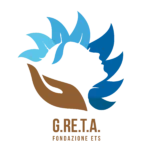Spring in Pompeii – Naples Late Spring Interactive Course 2019
“There have been many disasters in this world, but few have given so much delight to posterity”.
This was what Johann Wolfgang Goethe, who came to visit the ruins during the spring of 1787, wrote about the catastrophic eruption in 79 AD that buried the Roman cities around the volcano Vesuvius. Throughout the centuries, Pompeii has continued to surprise its many visitors.
After years of probably insufficient structural work carried out on the site, on January 20th of 2012 the Great Pompeii Project (GPP) was implemented and since then it has breathed new life into one of the most important archaeological sites in the world.
The project involves a complex programme of conservation, maintenance, and restoration.
The project also involves new excavations in different areas of the ruins. Of particular interest is the “Regio V” area where the discovery of new artifacts and skeletons gives visitors a larger picture of life and death in Pompeii, in the shadow of Vesuvius.

The GPP highlighted that before the eruption, the city of Pompeii had been undergoing an intense restoration programme due to damage caused by a violent series of earthquakes: walls and frescos had been under consolidation, the ruined drainage system and many fountains had been under repair.
As the people of Pompeii were used to living in a volcanic area, despite the earthquakes and the ongoing restoration programme, they continued to lead their lives as normal, trying to ensure the vitality of the town by keeping shops and taverns open and continuing with the activities typical of a city which overlooked the cost and boasted a port.
It is believed that the tragic eruption of Vesuvius took place on 24th and 25th of August 79AD, but in the so-called “House with Garden” an inscription or “graffito” on one of the walls has been discovered which suggests the date to be 24th and 25th October instead. The author was most likely a person working in the storage of the house. He marked a date corresponding to October 17th.
Professors De Simone and Pappalardo had already made reference to various findings before the discovery of the “graffito” which suggest that the eruption took place in Autumn rather than in Spring: metal fireplaces to warm rooms, the discovery of carbonised fruits and a dated coin). All of these findings together change the story of Pompeii.
Come to explore Pompeii and I am sure you will discover a new side of it.
I wait for you in Naples!
Deadline for registration on 30th April. Click here for more info.
[bctt tweet=”Spring in Pompeii #Naples Late Spring Interactive Course 2019 #GretaOncoplastic #Pompeii” username=”GretaOncoplast”]




